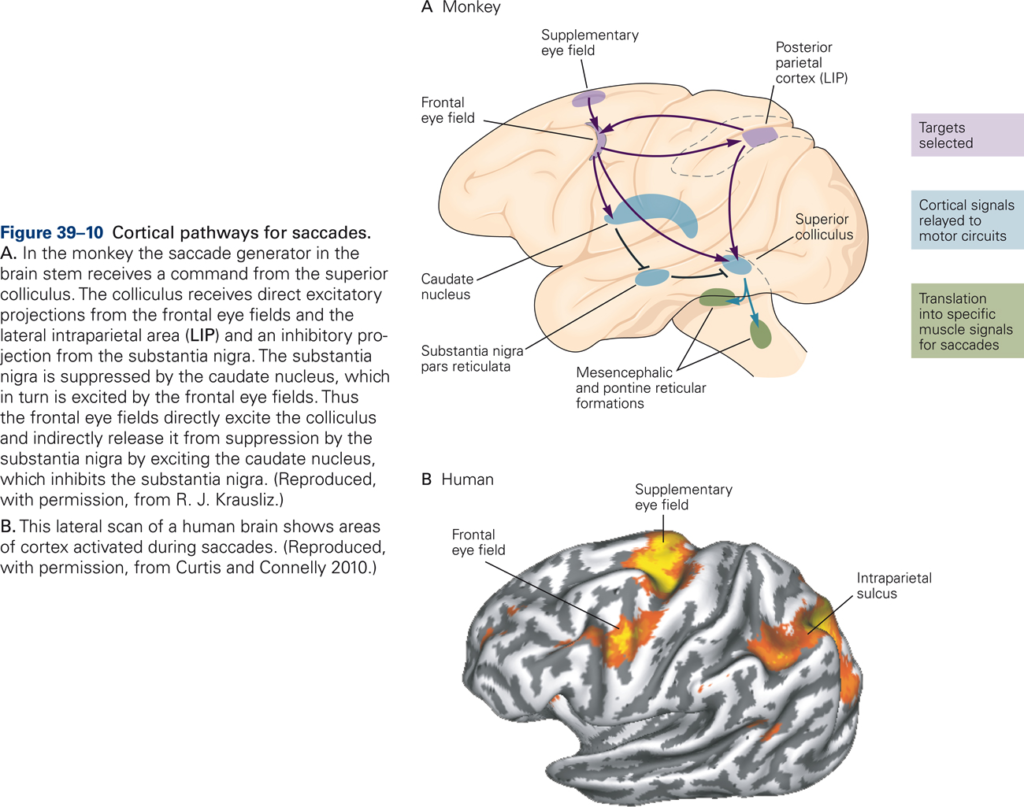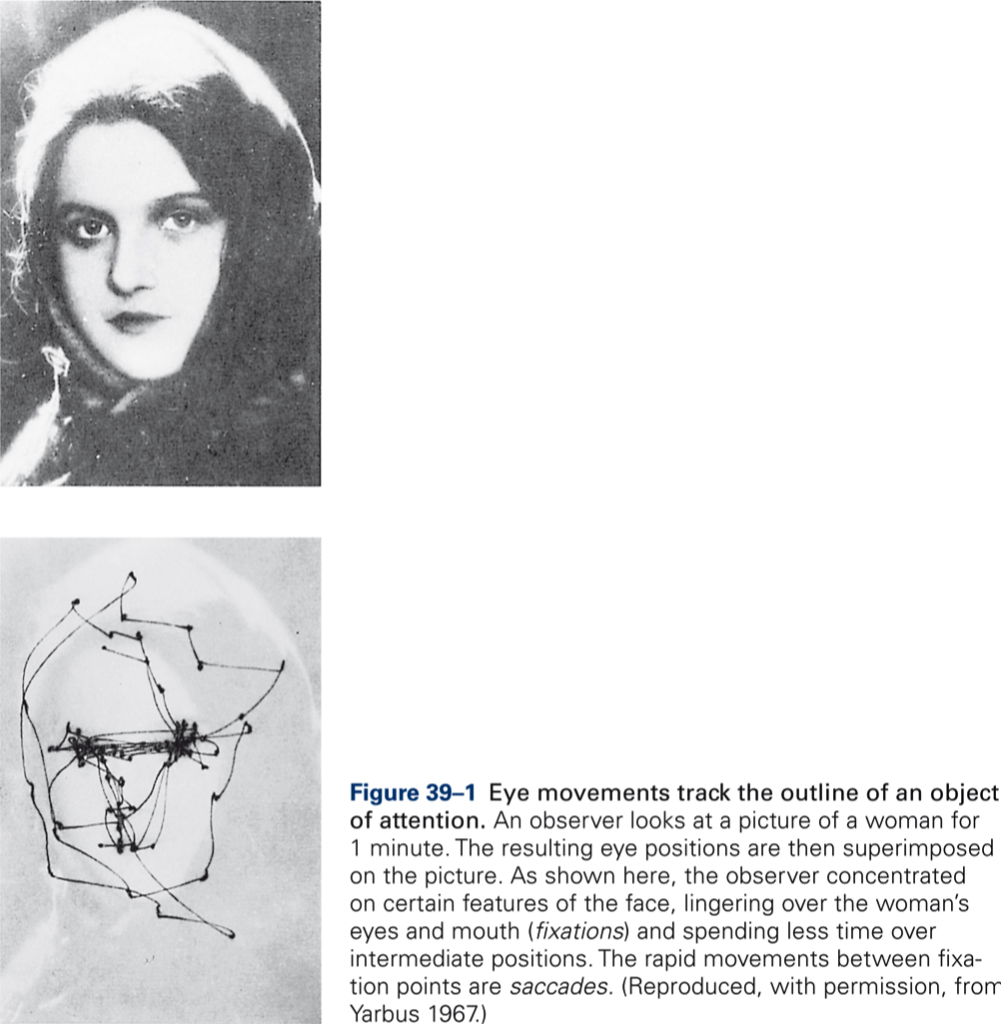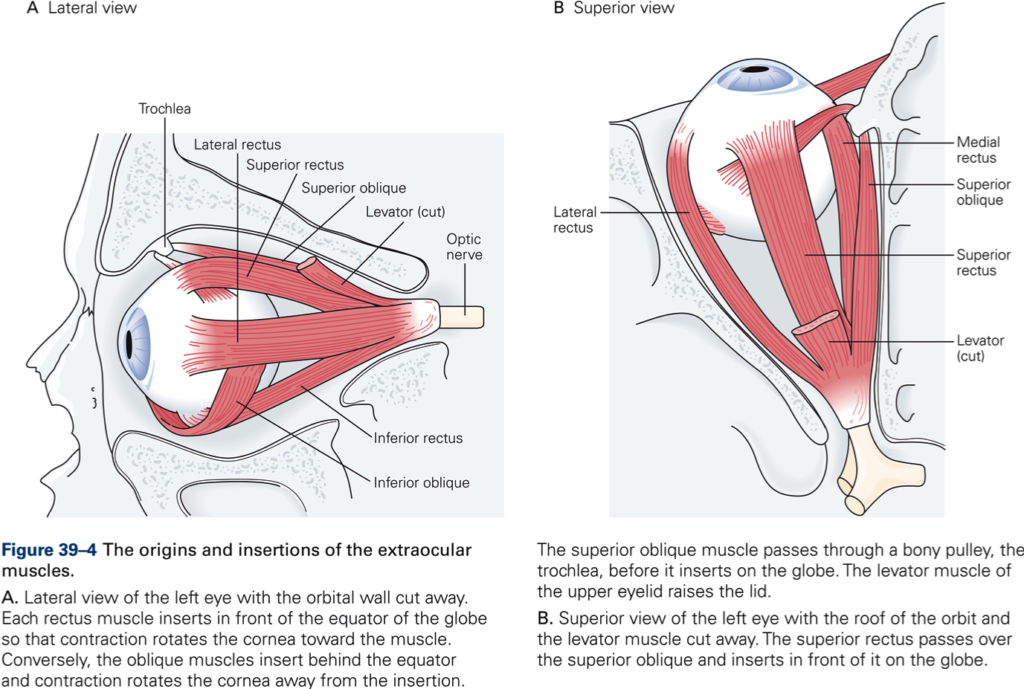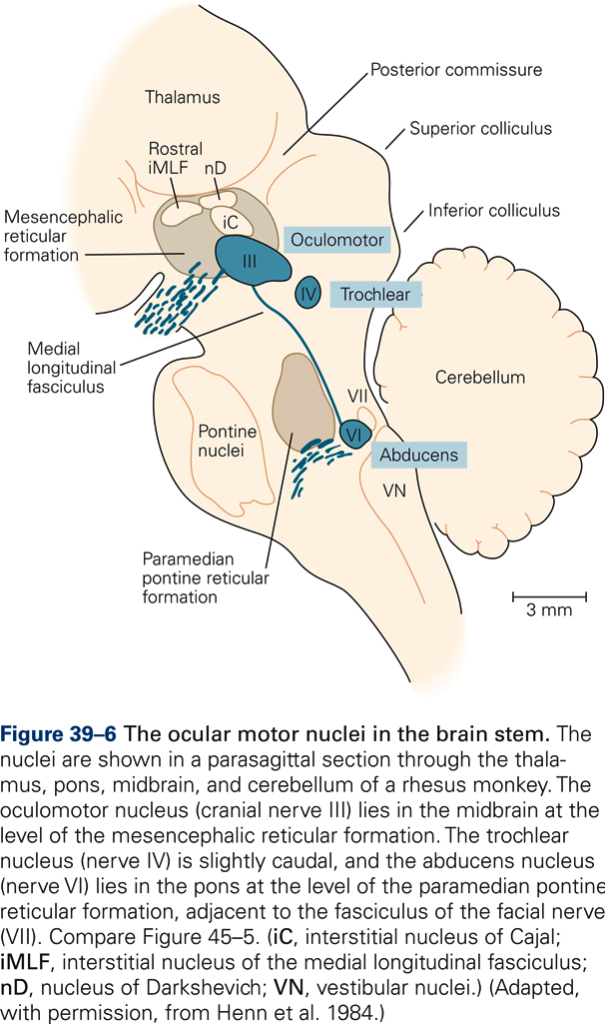M3 | Descending control – Medial system
Eye movements
classes of eye movements
- Reflexes that function to stabilize the eye while the head is moving (e.g. vestibuloocular reflex, VOR).
2. Smooth pursuit eye movements.
3. Vergence eye movements
4. Eye movements that keep your gaze pointed towards an object of interest (e.g. saccades).
Saccades are very fast eye movements (400 deg/sec) that are usually of short duration. They point your gaze toward what you want to look at. Saccades are conjugate eye movements, that is, both eyes must move together, for example rightward or leftward.
Extraocular muscles
To understand how eye movements are produced and controlled we need to know something about the muscles that move the eye. In many ways, eye movements are easier to study than movements of other body parts because each eye is moved by only 3 pairs of muscles. Also, there are only 3 degrees of freedom in eye movements (vertical, horizontal, and torsional).
- Medial and lateral rectus: rotate eye toward nose or towards temple, respectively
- Superior and inferior rectus: rotate eye upward or downward, respectively
- Superior oblique: torsional movement toward nose and down. Inferior oblique: torsional movement toward temple and up.
How do pairs of extraocular muscles produce conjugate eye movements?

Example: Visual target is toward the left.
- Left eye: lateral rectus contracts, medial rectus inhibited, so relaxes
- Right eye: medial rectus contracts, lateral rectus inhibited, so relaxes
Key Takeaways
- Saccades are small but fast eye movements that move gaze to a desired target.
- Depending on the direction of the saccade, 1, 2, or 3 pairs of eye muscles will be either activated or inhibited.
Organization of cranial nerve nuclei that innervate extraocular muscles
 s
s
Centers for horizontal gaze (PPRF) and vertical gaze (riMLF)
The superior colliculus orients eyes and head towards stimuli in the environment
Movement field: part of the visual field to which the eyes move in response to activation of given region within the superior .
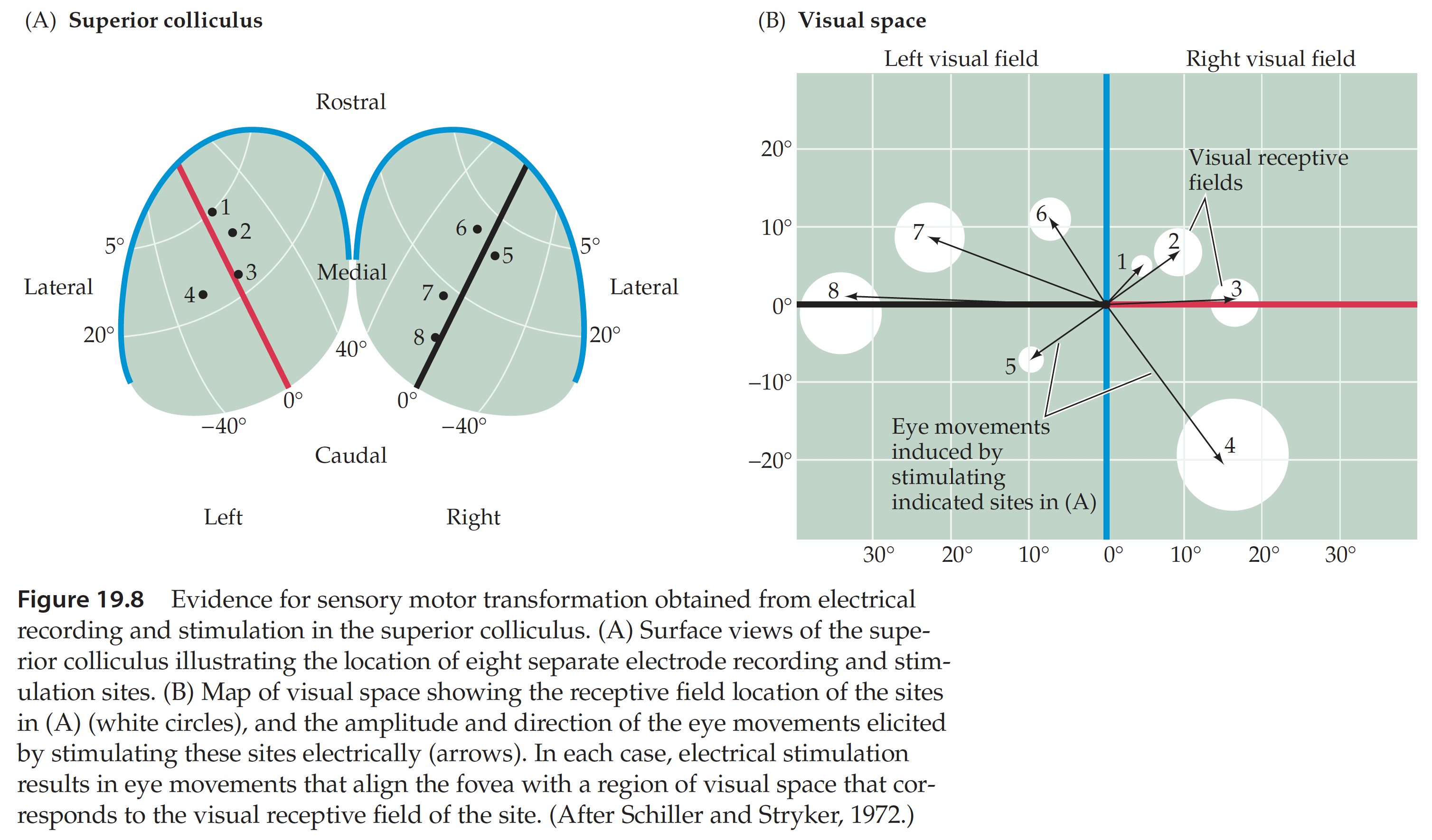
The frontal eye field commands the superior colliculus and gaze centers
Neurons in the FEF increase their activity to a stimulus that become a targets of a saccade, but only when the monkey makes a saccade to the stimulus. Unlike superior colliculus neurons that discharge before all saccades, these neurons only discharge before saccades that are relevant for the monkey’s behavior.
